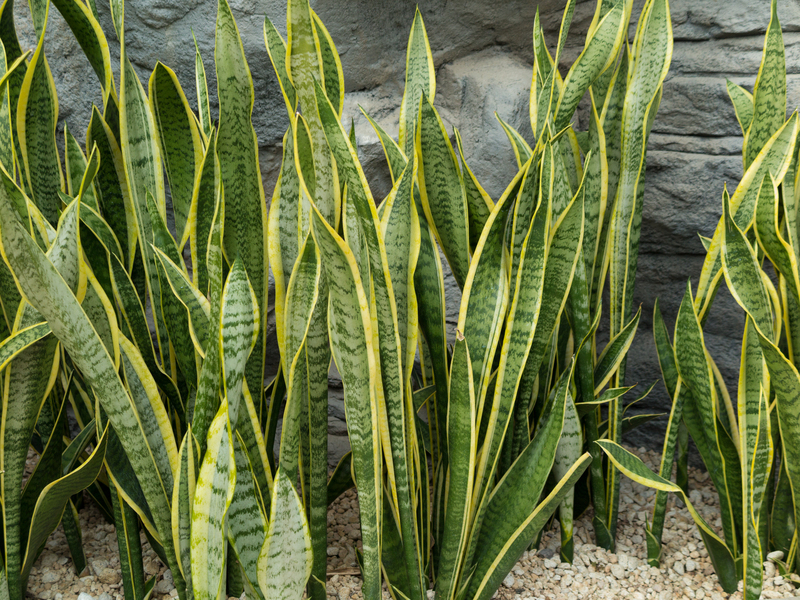Three Ways to Mobilize Your Garden for Flexible Living Spaces
In an era marked by changing lifestyles, urbanization, and the necessity of maximizing available space, garden flexibility has never been more relevant. From city dwellers yearning for a slice of nature to homeowners seeking multifunctional areas, mobilizing your garden for flexible living spaces offers untapped potential for comfort, activity, and creativity. But how do you transform a traditional garden into a vibrant, multifunctional hub? Read on for three comprehensive ways to reimagine your outdoor space, unlocking new opportunities for leisure, work, and wellness.

Why Create Flexible Living Spaces in Your Garden?
The concept of flexible outdoor living spaces is revolutionizing how we use our gardens. No longer just zones for plants and lounging, modern gardens can serve as dynamic extensions of our homes, morphing easily between entertainment, relaxation, work, and physical activity zones. This not only boosts your property value but also enhances your quality of life by promoting well-being, productivity, and social interaction.
- Adaptability: Switch between activities--yoga in the morning, office space in the afternoon, and a social hotspot by night.
- Space Efficiency: Maximize every inch, especially valuable for smaller gardens or urban yards.
- Enhanced Wellness: Access to nature, fresh air, and sunlight supports mental and physical health.
Let's explore in detail three proven strategies to mobilize your garden for flexible living spaces.
1. Maximize Mobility with Modular and Multi-Use Garden Furniture
Why Modular Furniture Makes a Difference
One of the foundation stones of a transformative garden is modular garden furniture. Investing in portable, lightweight, and reconfigurable outdoor pieces allows you to adapt your garden setup to fit any occasion. From popup workstations to cozy evening lounges, multi-use furniture provides versatility without sacrificing style.
Key Modular Furniture Options for Flexible Outdoor Living
- Foldable Tables and Chairs: Ideal for temporary work setups, family meals, or creative pursuits.
- Stackable Seating: Store easily when not in use, then expand seating for gatherings.
- Outdoor Ottomans and Poufs: Function as footrests, side tables, or additional seating in a pinch.
- Convertible Daybeds and Sofas: Transition effortlessly from a daytime lounge to nighttime entertainment.
- Portable Shade Structures: Lightweight canopies, parasols, and pergolas adapt to different weather and activities.
How to Arrange Modular Furniture for Maximum Flexibility
Arrange your moveable garden furniture in ways that allow quick reconfiguration. Prioritize easy-to-move items, and create zones with rugs or planters for specific activities. For instance:
- Work-from-Garden: A lightweight table nestled under a tree can be designated as your outdoor office.
- Social Evenings: Rearrange sofas and chairs in a circle, string up some lights, and add a fire pit centerpiece.
- Wellness Retreats: Shift loungers toward the sun for meditation, then group them near water features in the afternoon.
Remember, flexibility in your garden space begins with how easily you can rearrange your essentials.
2. Embrace Mobile Planting Solutions for Dynamic Greenery
Why Go Mobile with Plant Arrangements?
Traditional gardens often rely on fixed beds and static borders, which limit adaptability. Mobile planting solutions not only allow gardeners to tweak aesthetics with the seasons or special occasions, but also accommodate diverse microclimates and plant needs. This mobility turns your green space into a dynamic botanical landscape.
Top Mobile Planting Ideas for a Versatile Garden
- Potted Plants and Trees: Mix and match sizes, colors, and locations. Use rolling casters for larger pots to move heavy plants effortlessly.
- Vertical Gardens: Freestanding or wall-mounted, these maximize growing space and can act as privacy screens or artistic focal points.
- Raised Garden Beds on Wheels: Grow vegetables or flowers and chase the sun as needed.
- Hanging Baskets and Rail Planters: Elevate color and texture, freeing ground space for events or yoga.
- Modular Green Partitions: Movable trellises and hedges create natural dividers that double as habitat for wildlife.
How to Use Mobile Planting for Flexible Living
Plan your garden plant mobility around seasonal events and everyday needs. Examples include:
- Outdoor Privacy: Group tall potted plants or green partitions for instant privacy walls during parties or family gatherings.
- Pop-up Eden: Rearrange containers for a lush backdrop during barbecues or alfresco dinners.
- Seasonal Decor: Rotate annuals, bulbs, and evergreens so your space looks fresh year-round.
This approach not only enhances visual interest, but also helps gardeners test new arrangements and experiment with sun, soil, and water conditions.
3. Integrate Smart Technology and Flexible Infrastructure
The Role of Technology in Adaptable Gardens
Modern flexible living spaces go beyond furniture and foliage. Integrating intelligent technology and infrastructure can completely revolutionize how you use and enjoy your garden. From lighting and climate control to outdoor power and smart irrigation, these features add comfort, efficiency, and creativity to your adaptive garden.
Smart Tech Solutions for Mobile Outdoor Spaces
- Wireless Outdoor Lighting: Use solar-powered, portable, or smart-controlled lights to set the mood for different activities.
- Smart Speakers and Entertainment Systems: Portable weatherproof devices that bring music, podcasts, or even movies outdoors.
- Retractable Awnings and Blinds: Create instant shelter or shade at the touch of a button.
- Outdoor Power Outlets: Weather-resistant, strategically placed outlets that power workstations, appliances, or gadgets.
- Automated Watering Systems: Mobile hoses or smart drip irrigation keep plants healthy even as you reconfigure beds and containers.
Flexible Infrastructure for Multi-Purpose Outdoor Spaces
Beyond tech, physical infrastructure choices make a tremendous difference. Consider:
- Portable Decking Tiles: Lay temporary or seasonal flooring for pop-up parties or play zones.
- Removable Shade Sails: Quick to put up or take down, these allow you to control sun exposure as needed.
- Folding Screens and Dividers: Create instant rooms, wind breaks, or privacy screens.
- Weatherproof Storage Units: Mobile sheds or benches double as storage and seating for gardening tools, leisure items, or tech gear.
With the right infrastructure, your garden can be a holiday retreat, play area, home office, or dinner venue--all in one.
Tips and Tricks for Managing Flexible Outdoor Living Areas
- Plan with Purpose: Sketch out different use scenarios before buying furniture or planting. Think about your typical week and how your needs might change with the seasons.
- Invest in Quality: Choose weather-resistant, durable furniture and containers for longevity and safety.
- Easy Access: Maintain clear pathways for moving furniture, planters, or equipment. Paved, gravel, or decking walkways help protect your lawn and prevent tripping.
- Utilize Mobile Storage: Store kid's toys, garden tools, or seasonal decor in mobile bins or benches to keep your space clutter-free yet ready for action.
- Embrace the Unpredictable: Remember that weather, mood, and even your social plans can change. Flexibility is key, so choose elements that can be put away, repurposed, or swapped out in minutes.
Flexible Garden Living: Inspiration and Real-Life Success Stories
Small Urban Courtyard, Maximum Versatility
Maria, a London resident with just 40 square metres of garden space, used modular sofas, planters on wheels, and string lights to transform her courtyard. By day, it serves as an office with a foldaway desk and shaded pergola. Evenings find the furniture rearranged for movie nights or cocktails under the stars, with mobile trees creating privacy when needed.
Family-Friendly Backyard Transformed
In Sydney, the Chen family turned a flat, grassy yard into a flexible haven. Stackable storage benches double as seats for their kids' homework club. Raised veggie beds on lockable casters roll into the sun or shade. The real showstopper: a pop-up cinema using a portable projector, fold-up screen, and beanbag seating--entirely stowable after the credits roll.
A Retreat for Work and Wellness
James, a remote worker in Toronto, placed his portable standing desk among tall, potted bamboo for privacy. By mid-afternoon, he transforms the space with a hammock and modular planting wall, ensuring his living garden supports both productivity and relaxation.

Benefits of Mobilizing Your Garden for Flexible Living Spaces
- Improved Lifestyle: Adapt your environment to suit changing needs--from quiet solo work to active play or lively gatherings.
- Eco-Conscious Choices: Maximize sunlight, shade, or rainfall capture by moving furniture and planters accordingly.
- Social Connection: A flexible garden easily adapts for family, friends, or community events.
- Personal Creativity: Experiment with layouts, uses, and plant combinations for a space that reflects your personality.
Conclusion: Transform Your Garden into a Flexible Living Space Today!
As we seek smarter, more sustainable ways to enhance our homes and well-being, mobilizing your garden for flexible living is a trend that's here to stay. The keys are investing in modular furniture, embracing mobile planting, and adding smart infrastructure. By doing so, you not only unlock your garden's full potential but also create an outdoor space that grows, adapts, and thrives along with your evolving lifestyle.
Ready to start? Evaluate your current setup, make small changes for flexibility, and enjoy the benefits of a truly adaptable garden living space--where creativity knows no bounds!
Frequently Asked Questions
- What is a flexible outdoor living space?
A flexible outdoor living space is a garden or yard that can be easily adapted for multiple uses--such as dining, relaxation, work, or play--using mobile furniture, containers, and portable features. - How do I maintain a mobile garden?
Opt for lightweight or wheeled planters, modular furniture, and weatherproof materials. Regularly reassess your needs to update layout and accessories as your lifestyle changes. - Are there budget-friendly ways to mobilize my garden?
Absolutely! Start small with rolling planters, stackable stools, and portable shade. Reuse indoor furniture outdoors where possible, and DIY with recycled materials.
Remember: A truly mobile and flexible garden is all about embracing change--with practical features, creativity, and a dash of inspiration, your outdoor space can be transformed to fit any need, season, or occasion.